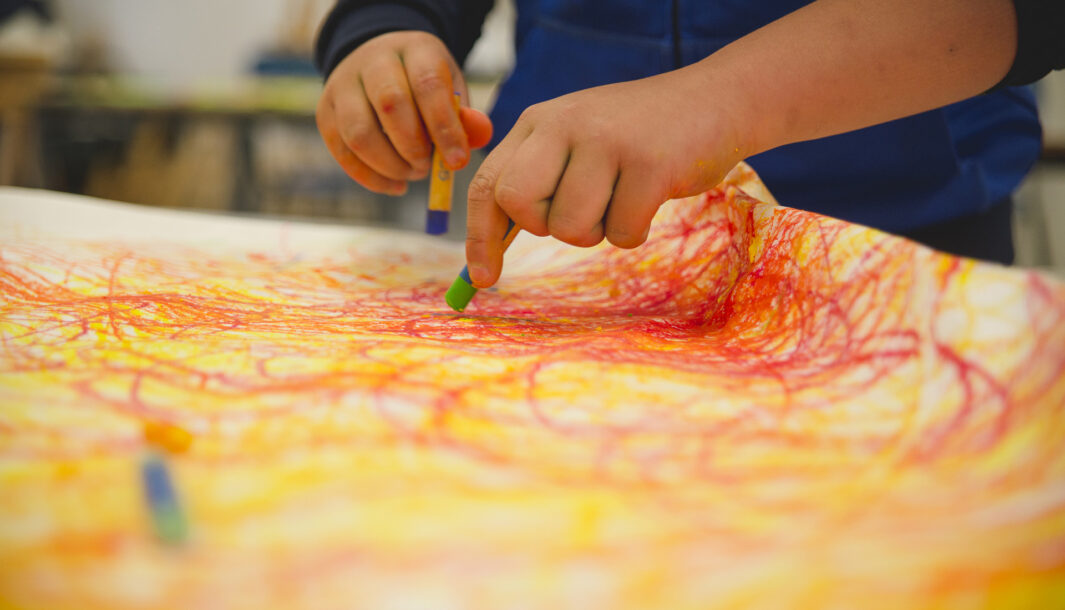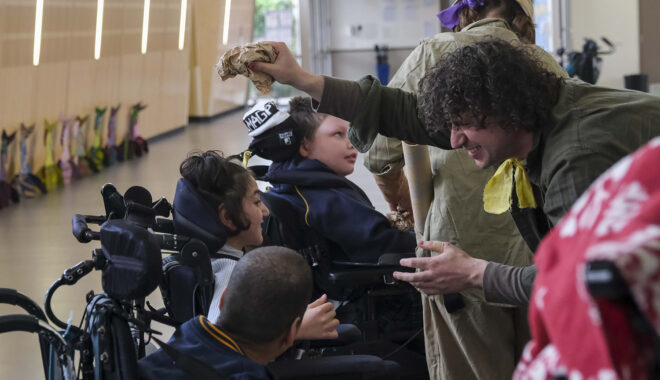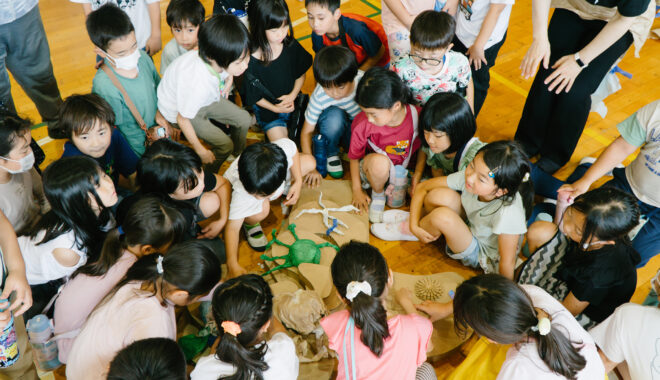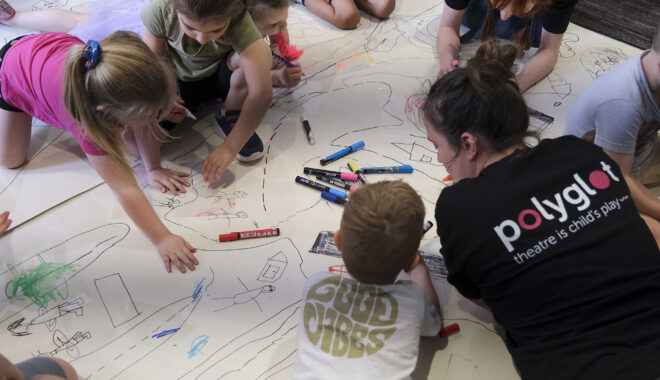18 Oct 2019 Education News
Understanding the sensory needs of neurodiverse students

By Mischa Long
Sensory and responsive art practices, and working with students who have differing communication needs, is a very large topic. A deeper understanding of these students and their needs ensures that we are more effective educators, with a greater ability to be truly inclusive in our practice.
In addition to working with Polyglot for over 20 years I am also an art teacher who has worked in the Special Development sector for many years. I try to develop art programs and activities that satisfy the requirements for assessment and also engage the students in a variety of ways. The tenet ‘allowing for a variety of responses’ has been a guiding principle, as has the process of developing the independence of the students, so that they can create and engage with artwork with less and less prompting or assistance.
In my experience as a teacher, and in creating sensory friendly and adaptive works, I have come to realise that so much of what we are faced with comes down to communication. Neurodiverse students communicate in a variety of ways, some obvious in their intent, some less so.
Challenging behaviours such as excessive noise, physical contact, tantrums or other attention-seeking behaviours are all part of a student’s attempt at communication. For students who don’t have or choose not to use language, or who may find neurotypical forms of communication difficult, the methods that are left can appear to be ‘negative’ when in fact they are a student trying to express a need or want, distress or joy.
Paradoxically, sometimes a student’s use of language can in fact be an impediment to real understanding of their needs. Words can be used that don’t bear relation to what is actually going on (such as echolalia) and as teachers we can become distracted by the verbal and miss the underlying signals. Using augmentative and alternative communication (AAC) such as Proloquo, PODD books (pictogram based communication systems) or sign language can help to overcome the barrier of language.
Some students, as well as not having the expressive language to communicate their feelings or needs, may not even know what it is they are feeling. It could feel like an overpowering sensation that something is not right or that you have no control. It could feel like you are unable to get help, and so in order to express this emotion you turn to the behaviour that you know works – overturning furniture, running from a room, hitting your head, screaming, or any number of ‘negative’ behaviours.
As teachers we often feel that it is our duty to stop that behavior, and often this is necessary to prevent harm to the student or others. We try to calm the student and get the classroom back in order, and then the challenge is to understand what the student is trying to tell us, which can be difficult when emotions are heightened.
These challenges are important to understand when we explore the value of sensory based and responsive tasks in a neurodiverse setting.
How do we engage students in ways that respect their responses and maximise their chance to enjoy the tasks we present? How do we adapt our tasks to them rather than trying to make them fit our parameters?
If a student is asked to perform a task or use an item that is seemingly innocuous to us – eg. hold a pencil and draw on the paper – but is instead having a meltdown, is this because the student is being task avoidant, or “lazy” (this word is very problematic for a number of reasons) or is it because there is some other factor that we may not be aware of?
If students don’t create work or respond to stimuli in a regular way, the challenge then is to find a way into their sphere of communication/preference/need and work from there to make something. Tactile defensiveness, extended processing time or sensory overload are often more likely to be behind a student’s seeming reluctance to engage.
Tactile defensiveness can occur when a student is reluctant to touch items, not liking the sensation the item has on their skin – the waxiness of crayons, the sliminess of paint – or because of enhanced sensitivity to all touch. I have used other sensory stimuli in cases such as this, particularly things like scrunching paper near their ears, rubbing my own fingers on corrugated cardboard to make a sound or holding cellophane up to create colour in their field of vision. By holding up a few different colours and gauging the student’s preference, you can then proceed to making a light collage (layers of cellophane glued together) or 3D glasses or another sensory item. The cellophane task is a good example of the ‘allowing for a variety of responses’ idea. A child may choose to touch or hold it, they may just look through it, but it is nearly always effective at engaging them in some way. It creates a moment of altered visual perception that they can enjoy without too much pressure, and if they don’t want to engage they can just look away.
Understanding the processing time of a student is vital. A student may take several minutes to register and respond to the request to perform a task and if the task is based on sequential steps, this can mean the task is never completed. If the task is instead more free-flowing and responsive to their offers, then the pressure is removed because whatever the result is we view it as a successful engagement. The outcome can be celebrated and the next steps of a program can be developed in response to this interaction. This honours the student’s work, and opens up new ways for us to think about the kind of tasks that will have meaning for them as learners and us as educators.
We struggle with communication all the time. Understanding the sensory needs of students, and trying to create tasks that have many points of entry and many ways to respond, can create possibilities and activities that help us understand and respect the individuality of each student and create a framework for really rewarding engagements.
Resources and further reading:
Arky, B. (n.d). Sensory Processing Issues Explained. Child Mind Institute. https://childmind.org/article/sensory-processing-issues-explained/
Chu, S. (n.d). Tactile Defensiveness – Information for Parents and Professionals. Dyspraxia Foundation. http://dyspraxiafoundation.org.uk/wp-content/uploads/2013/10/Tactile_Defensiveness.pdf
Biography
Mischa Long has worked with Polyglot since 1996, as a performer, puppeteer and designer, helping to create shows around the world.
He is also a qualified teacher, working in the Special Developmental sector, creating inclusive art programs for students with special needs. This has led to him co-creating inclusive versions of Polyglot works for schools and presenting professional development workshops for other teachers and artists about the scope and possibilities of such work.
He believes strongly in the power of the arts to create opportunities for discovery and communication, transcending the barriers of language and perceived ability. This history of performing and working with children across all ages has informed his techniques and ideas, placing their creativity at the centre of the work.







